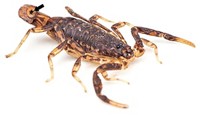Advertisement
Grab your lab coat. Let's get started
Welcome!
Welcome!
Create an account below to get 6 C&EN articles per month, receive newsletters and more - all free.
It seems this is your first time logging in online. Please enter the following information to continue.
As an ACS member you automatically get access to this site. All we need is few more details to create your reading experience.
Not you? Sign in with a different account.
Not you? Sign in with a different account.
ERROR 1
ERROR 1
ERROR 2
ERROR 2
ERROR 2
ERROR 2
ERROR 2
Password and Confirm password must match.
If you have an ACS member number, please enter it here so we can link this account to your membership. (optional)
ERROR 2
ACS values your privacy. By submitting your information, you are gaining access to C&EN and subscribing to our weekly newsletter. We use the information you provide to make your reading experience better, and we will never sell your data to third party members.
Awards
Newscripts
2018 Ig Nobel Prizes
by Bethany Halford
September 13, 2018
| A version of this story appeared in
Volume 96, Issue 37

Scientific studies on the cleaning power of spit, a lone fruit fly’s ability to spoil wine, and cannibals’ caloric intake garnered top honors at the 28th Ig Nobel Prize ceremony. The seriously silly citations, which “honor achievements that first make people laugh, and then think,” were awarded on Sept. 13 at Harvard University’s Sanders Theatre. Entertaining emcee Marc Abrahams and the savvy satirists of the Annals of Improbable Research produced the ceremony.
The coveted Chemistry Prize went to Portuguese researchers who quantified the cleaning power of human saliva. Nearly 30 years ago, conservators Paula Romão and Adília Alarcão teamed up with late University of Lisbon chemist César Viana to find out why conservators preferred their own saliva to any other solvent for cleaning certain objects—with the goal of finding a more hygienic substitute. Compared with popular solvents, saliva was the superior cleaning agent, particularly for gilded surfaces. The researchers attributed the polishing power to the enzyme α-amylase and suggested solutions of this hydrolase might achieve a spit shine similar to spit (Stud. Conserv. 1990, DOI: 10.1179/sic.1990.35.3.153).

A fruit fly in a glass of wine is always an unwelcome guest. But it turns out that as little as 1 ng of Drosophila melanogaster’s pheromone (Z)-4-undecenal can spoil a glass of pinot blanc. That discovery, from researchers led by Swedish University of Agricultural Sciences’ Peter Witzgall, received the Ig Nobel’s Biology Prize. Only female fruit flies carry the pheromone, so males can swim in spirits without delivering the offending flavor, but the Newscripts gang still prefers to drink wine without flies (J. Chem. Ecol. 2018, DOI: 10.1007/s10886-018-0950-4).
Putting the paleo diet in a new perspective, University of Brighton archaeologist James Cole took home the Nutrition Prize for calculating that Paleolithic people consumed fewer calories from a human-cannibalism diet than from a traditional meat diet. Thus, Cole concludes, Paleolithic cannibals may have dined on their companions for reasons unrelated to their nutritional needs (Sci. Rep. 2017, DOI: 10.1038/srep44707).
A team led by Wilfrid Laurier University psychologist Lindie H. Liang won the Economics Prize “for investigating whether it is effective for employees to use voodoo dolls to retaliate against abusive bosses.” Push in some pins: The findings indicate voodoo doll retaliations make employees feel better (Leadership Q. 2018, DOI: 10.1016/j.leaqua.2018.01.004).
The Newscripts gang previously reported about this year’s winners of the Ig Nobel for medicine, physicians Marc Mitchell and David Wartinger, who found that riding roller coasters can help people pass kidney stones (J. Am. Osteopath. Assoc.2016, DOI: 10.7556/jaoa.2016.128).
The Reproductive Medicine Prize went to urologists John Barry, Bruce Blank, and Michel Boileau, who, in 1980, used postage stamps to test nocturnal erections, described in their study “Nocturnal Penile Tumescence Monitoring with Stamps” (Urol. 1980, DOI: 10.1016/0090-4295(80)90414-8).
Advertisement
The Ig Nobel committee also gave out a Medical Education Prize this year, to gastroenterologist Akira Horiuchi for the report “Colonoscopy in the Sitting Position: Lessons Learned from Self-Colonoscopy” (Gastrointest. Endoscopy 2006, DOI: 10.1016/j.gie.2005.10.014).
Lund University cognitive scientists Gabriela-Alina Sauciuc and coworkers claimed the Anthropology Prize “for collecting evidence, in a zoo, that chimpanzees imitate humans about as often, and about as well, as humans imitate chimpanzees” (Primates 2017, DOI: 10.1007/s10329-017-0624-9).
For a landmark paper documenting that most people don’t read the instruction manual when using complicated products, a Queensland University of Technology team led by Alethea L. Blackler garnered the Literature Prize (Interact. Comp. 2014, DOI: 10.1093/iwc/iwu023).

And finally, the Ig Nobel Peace Prize was awarded to a team from the University of Valencia’s University Research Institute on Traffic & Road Safety “for measuring the frequency, motivation, and effects of shouting and cursing while driving an automobile” (J. Sociol. Anthropol. 2016, DOI: 10.12691/jsa-1-1-1).
The Ig Nobel ceremony can be viewed in its entirety at youtube.com/improbableresearch, and National Public Radio’s “Science Friday” will air an edited recording of the ceremony on the day after U.S. Thanksgiving.
Bethany Halford wrote this week’s column. Please send comments and suggestions to newscripts@acs.org.





Join the conversation
Contact the reporter
Submit a Letter to the Editor for publication
Engage with us on Twitter